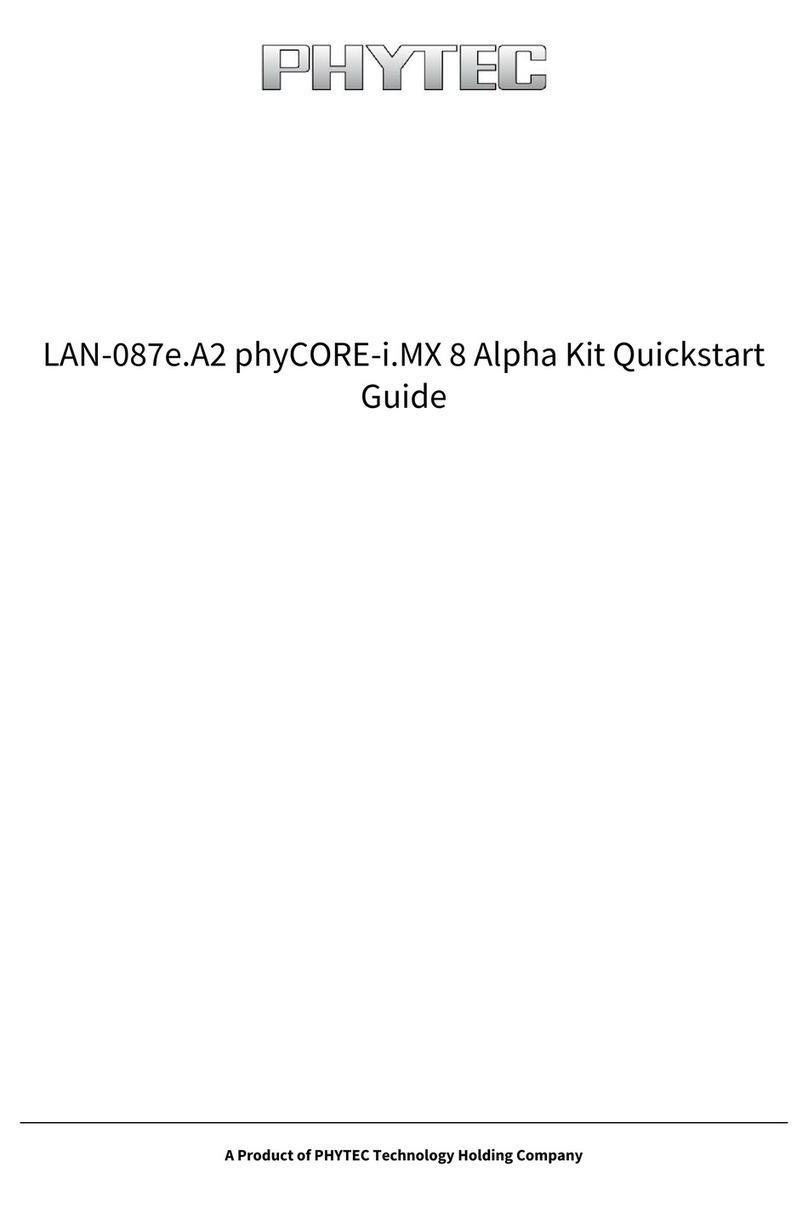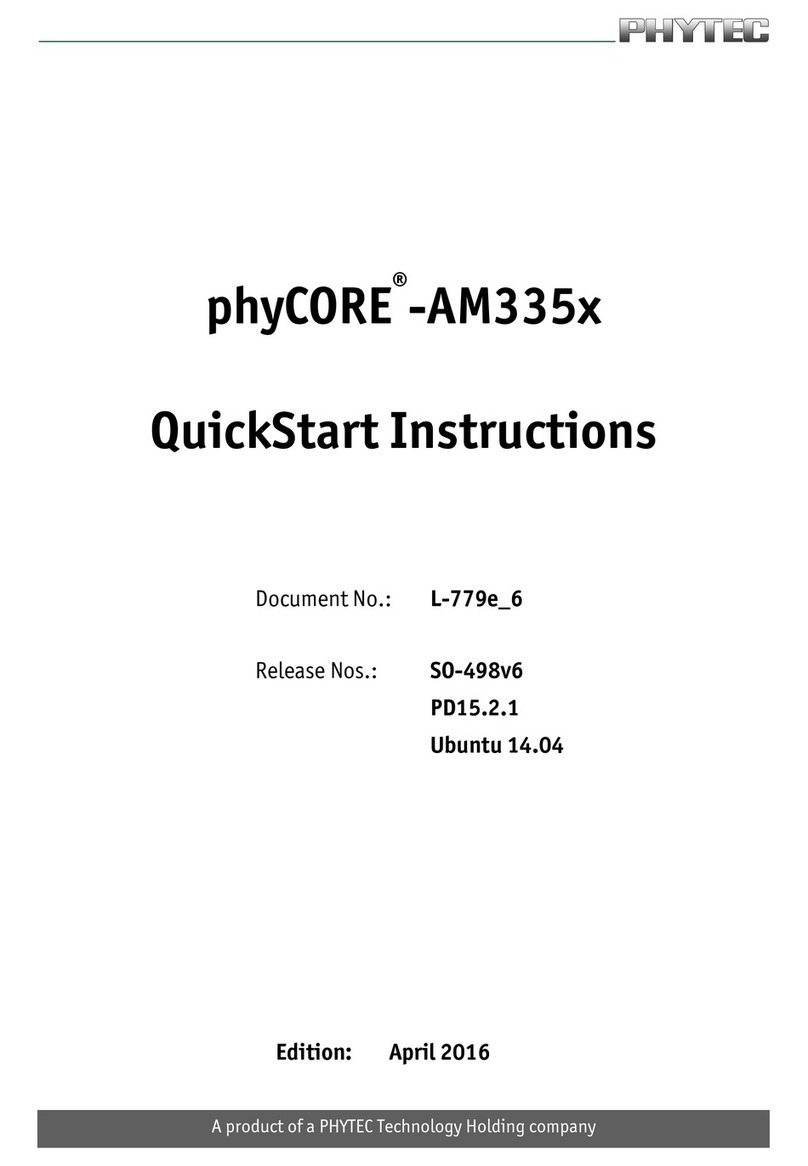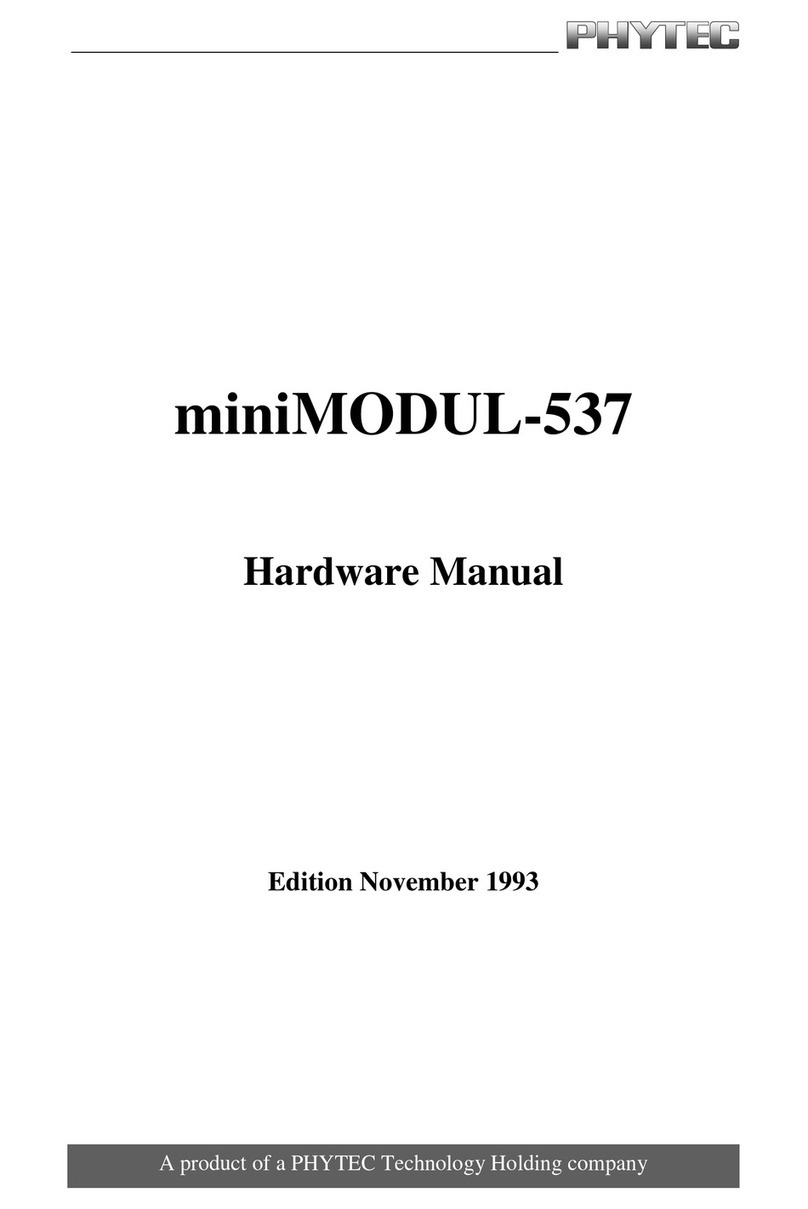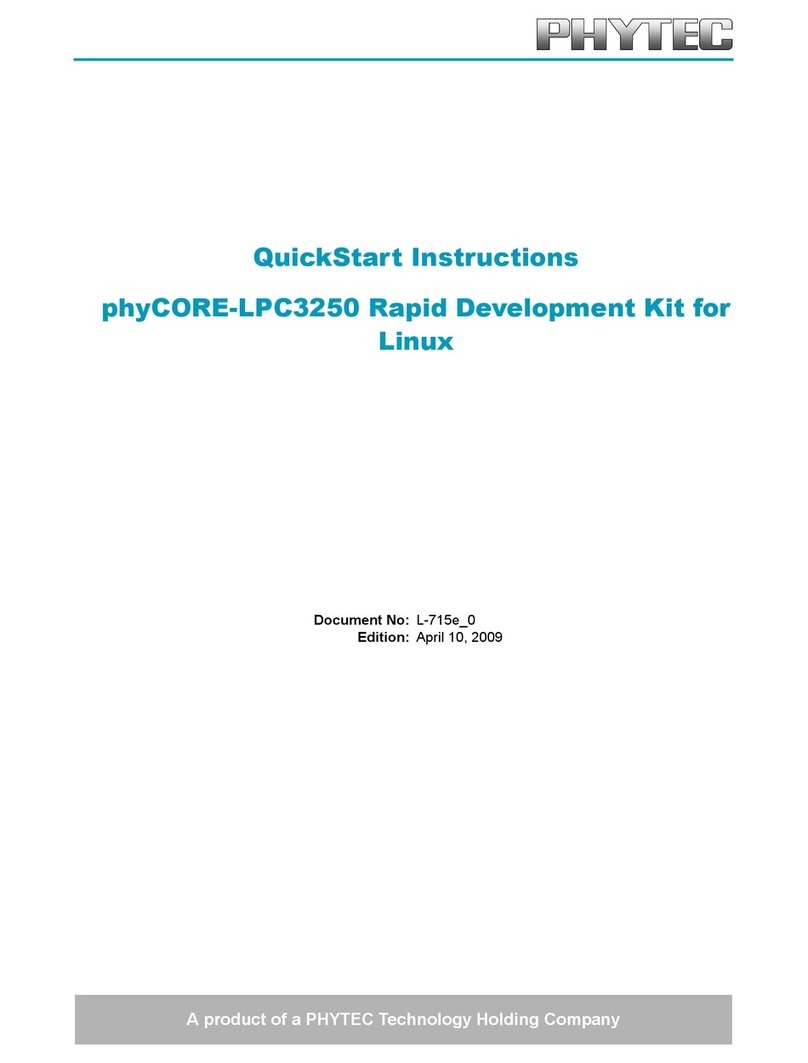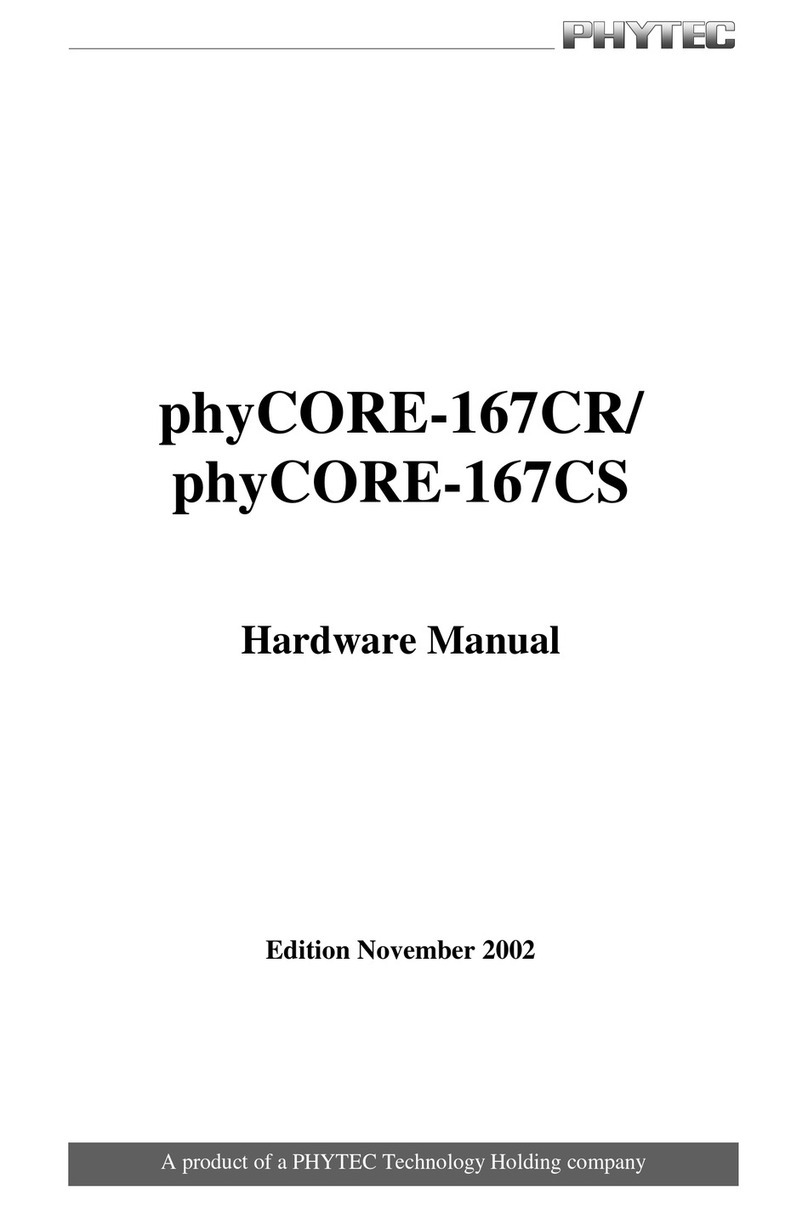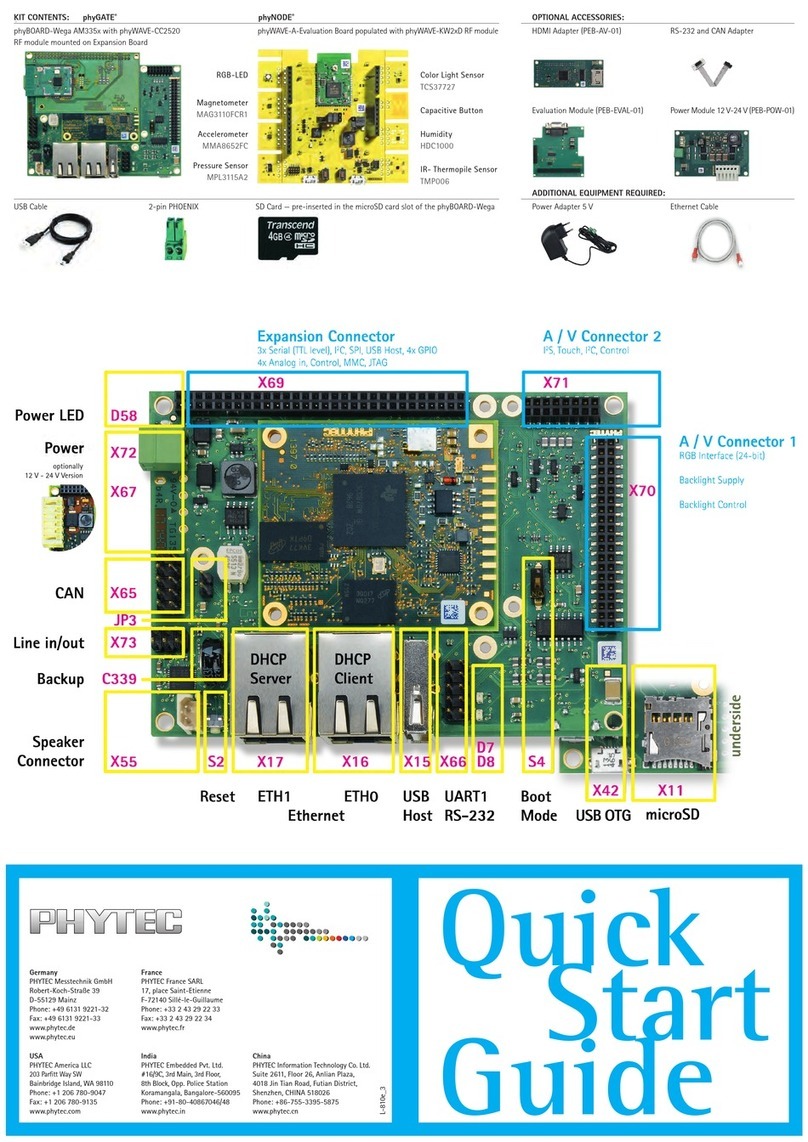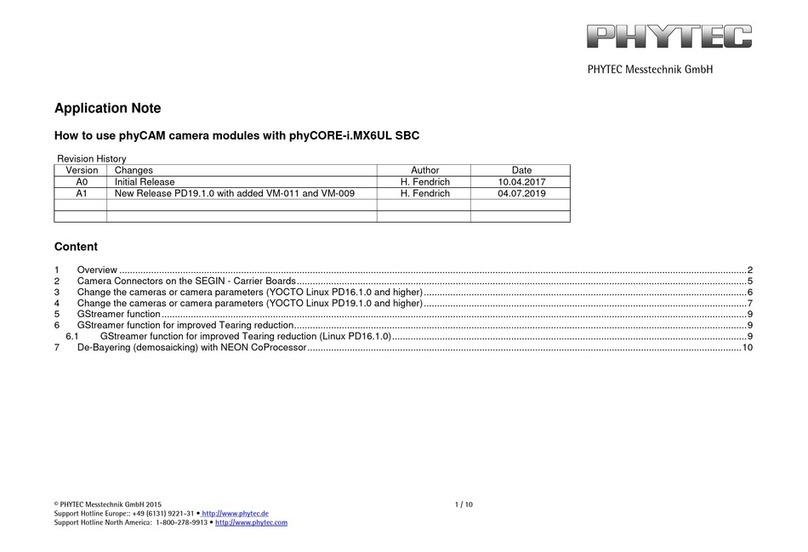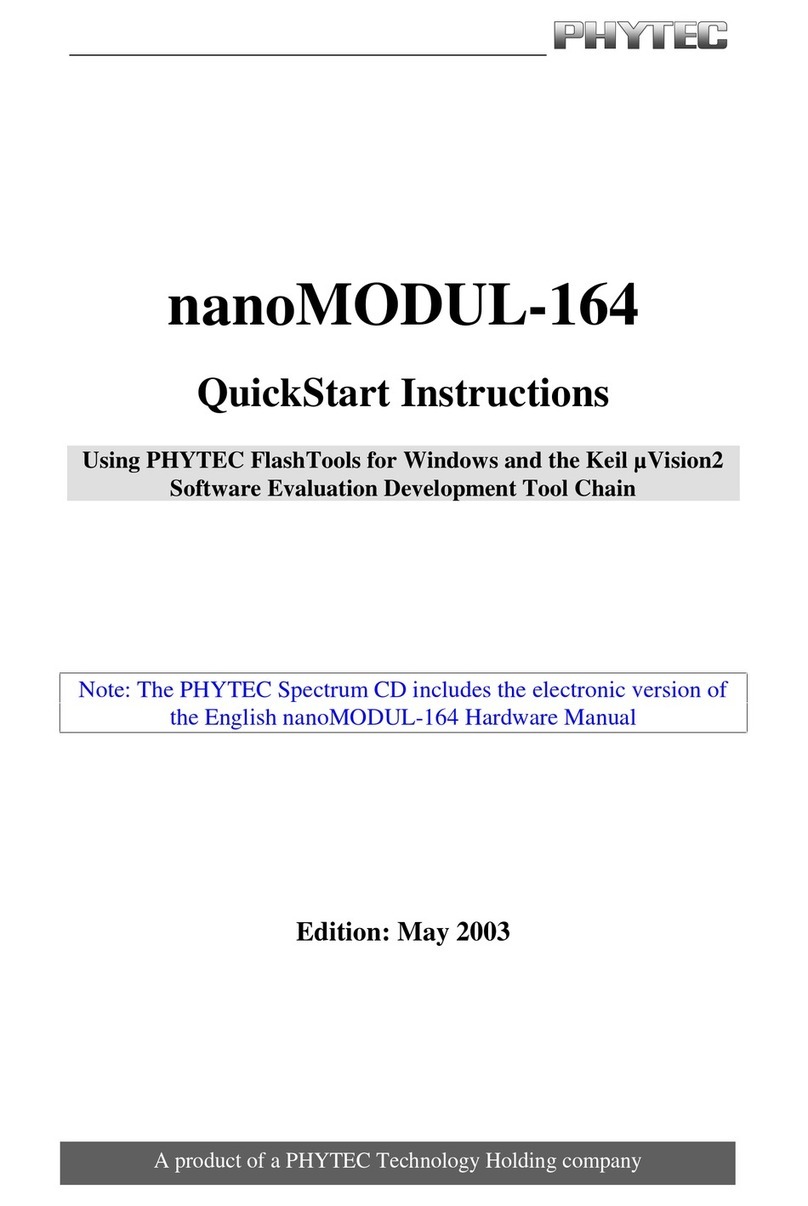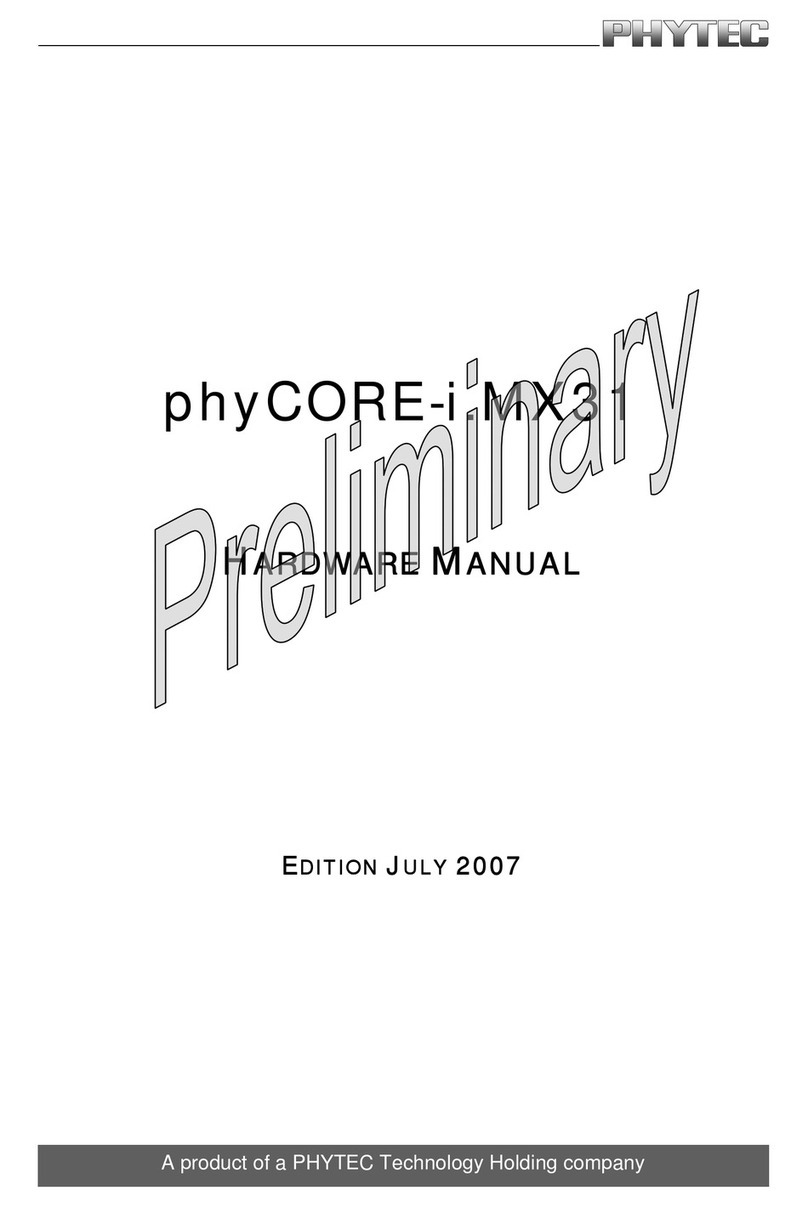
phyCORE-MPC5200B tiny
PHYTEC Messtechnik GmbH 2006 L-678e_0
Figure 21: Pin Assignment of the DB-9 Plug P2B (CAN Transceiver
on Development Board with Galvanic Separation)................. 71
Figure 22: Pin Assignment Scheme of the Expansion Bus....................... 74
Figure 23: Pin Assignment Scheme of the Patch Field............................. 74
Figure 24: Connecting the DS2401 Silicon Serial Number...................... 82
Figure 25: Pin Assignment of the DS2401 Silicon Serial Number........... 83
Figure 26: Ethernet Transformer Module Connector................................ 85
Figure 27: phyCORE-MPC5200B tiny Component Placement,
Top View ................................................................................. 87
Figure 28: phyCORE-MPC5200B tiny Component Placement,
Bottom View............................................................................ 88
Table 1: Default Port Configuration ........................................................ 9
Table 2: Pinout of the phyCORE-Connector X1................................... 18
Table 3: Jumper Settings........................................................................ 21
Table 4: System Start-Up Configuration ............................................... 26
Table 5: Choice of Flash Memory Devices and Manufacturers............ 28
Table 6: DDR SDRAM Device Selection.............................................. 30
Table 7: Serial Memory Options for U4................................................ 31
Table 8: Serial Memory I2C Address (Examples) ................................. 32
Table 9: Signal Definition PHY Ethernet Port (U2).............................. 35
Table 10: JTAG Interface ........................................................................ 41
Table 11: Technical Data ......................................................................... 44
Table 12: Improper Jumper Setting for JP30/33 on the Development
oard .......................................................................................... 55
Table 13: Improper Jumper Setting for JP28 on the
Development Board................................................................. 55
Table 14: JP9, JP16 Configuration of the Main Supply Voltages
VCC / VCC2............................................................................ 56
Table 15: JP9, JP16 Improper Jumper Settings for the Main Supply
Voltages ................................................................................... 57
